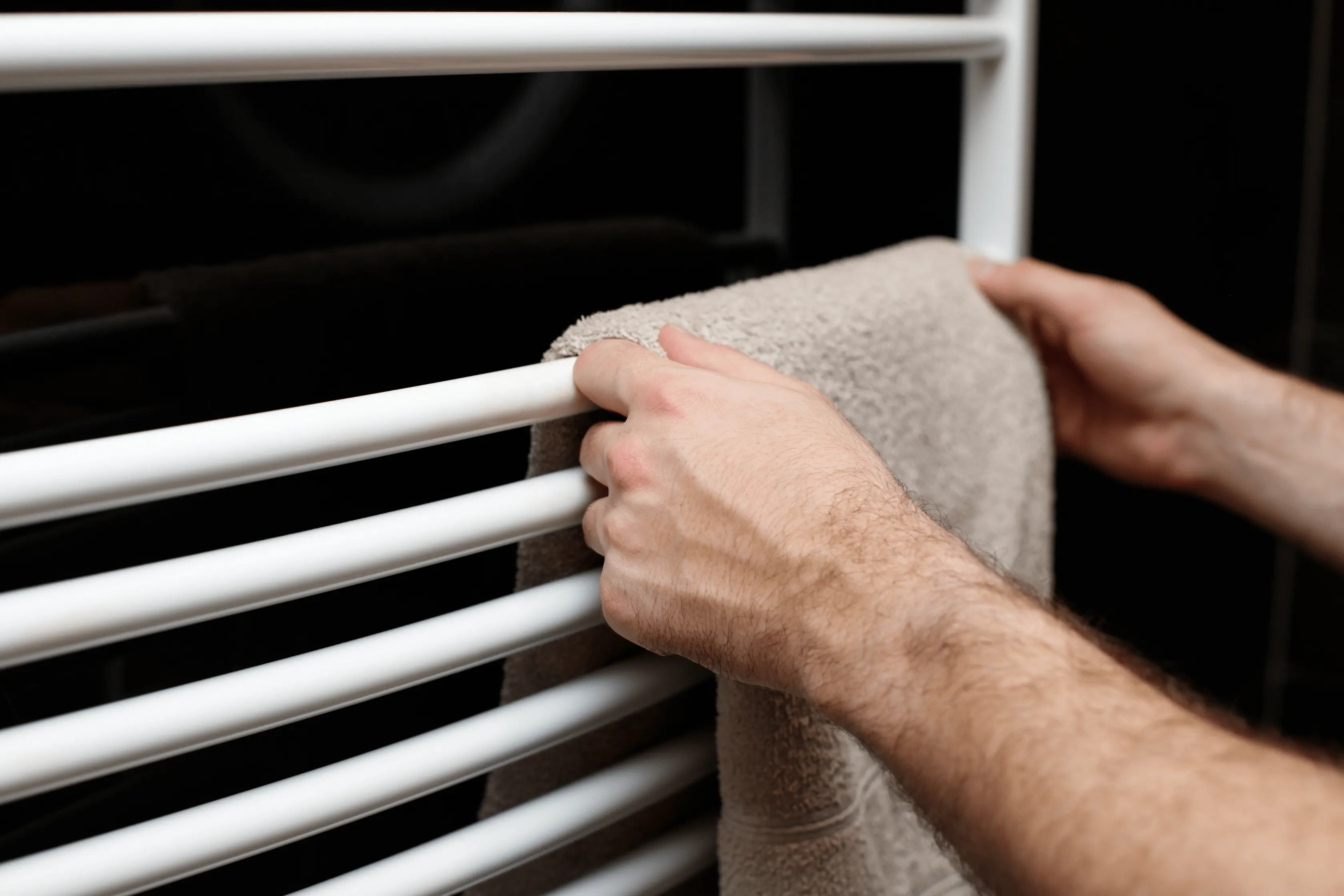Over time, air can accumulate in your heated towel rail, causing it to become cooler at the top than the bottom. This may mean you need to bleed your towel rail.
But are you totally aware of how to bleed a heated towel rail? Well, rest assured, this blog has you covered with a simple step by step guide on how to bleed a bathroom heated towel rail.
How Do You Know If Your Towel Radiator Needs Bleeding?
It is important to bleed your towel radiators on a regular basis to get rid of any air that may be trapped in the central heating system.
When air is present in your towel radiator, it occupies space that should be filled with hot water, thereby affecting the radiator's proper heating function. Below are signs that your towel radiator needs bleeding:
- Pipes rattle and shake
- Cold patches across your towel radiator
- Inefficient heating
- Gurgling noises that get bigger over time
So, let’s learn how to bleed a heated towel rail with an easy rundown.

Step By Step: How To Bleed A Towel Radiator
So, before we get started, let’s get a list of the equipment you will need.
- Radiator key or flat head screwdriver
- A towel
- A rag or cloth
- A spanner
Now you have the equipment you need, let's break down the simple 7 steps for bleeding your towel radiator.
1.Turn Your Heating Off
To begin with, it is essential to deactivate the central heating, otherwise there is a risk of moisture being reintroduced into the system.
2. Allow Your Towel Radiator To Cool Down
To ensure your safety and avoid the risk of burns, it’s key to allow the water in the towel radiator to cool for a duration of around 20 minutes.
3. Open All The Valves
Next ensure that the lock-shield and thermostatic radiator valves (TRVs) are set to the open position, if they exist.
To do so, remove the caps and turn them fully in the anti-clockwise direction using either a spanner or an Allen key.
4. Locate Bleed Valve
Find the bleed valve for the towel radiator. This component is generally located at the top of the towel rail, although it may sometimes be situated at the back.
The screws are mostly hexagonal or square. Additionally, a number of these valves have a slot on the front, which allows for the use of a flat head screwdriver in the absence of a radiator key.
5.Turn The Valve Anti-Clockwise
Take a towel or rag and lay it on the floor beneath the bleed valve.
Using your radiator key, turn the bleed key in a counterclockwise direction.
You will likely hear a hissing noise, signifying the release of air from the radiator.
6. Let The Water Flow Out
When the air has been removed from the towel radiator, bubbling water will emerge. It is important to capture this water with a rag or cloth and then securely close the bleed valve.
7. Check Your Boiler Pressure
Once all the above steps have been followed you can then inspect the water pressure gauge on your boiler.
We always recommend you refer to the user manual specific to your boiler model to replenish the pressure as needed.
In open vented systems, the refill process should occur automatically.
FAQ’s
Do Heated Towel Rails Need Bleeding?
Yes, absolutely they do. To ensure optimum performance of your heated towel rail, we recommend bleeding them at least once per year.
Where Is The Bleed Valve On A Towel Rail Radiator?
Typically, the bleed valve is located at the upper part of your towel rail. However, there are models where the bleed valve is situated at the rear of the rail. If you have a modern ladder-style towel rail, you should find the bleed valve at the top of one side, while the blanking plug will be on the opposite side.
How Do I Make My Heated Towel Rail Hotter?
The primary approach for modifying the temperature involves turning the knob clockwise to decrease the heat, effectively turning it off, or counter clockwise to increase the heat.
It may be challenging to turn the knob, and the use of pliers may be necessary.






















